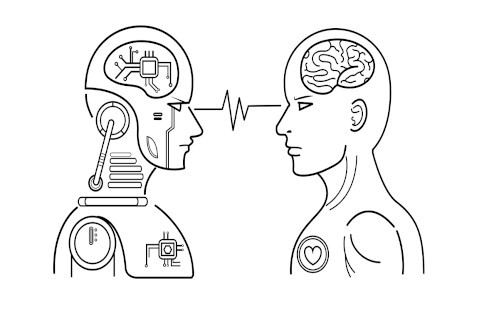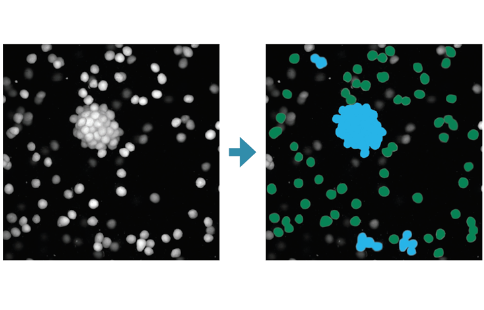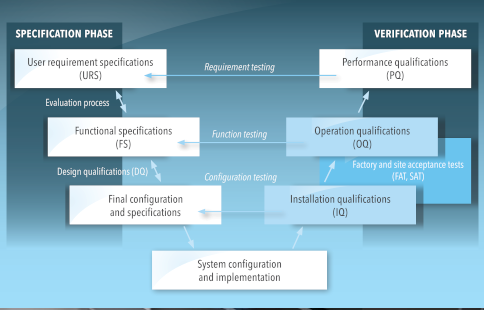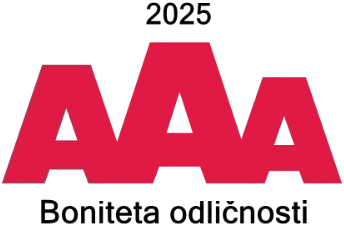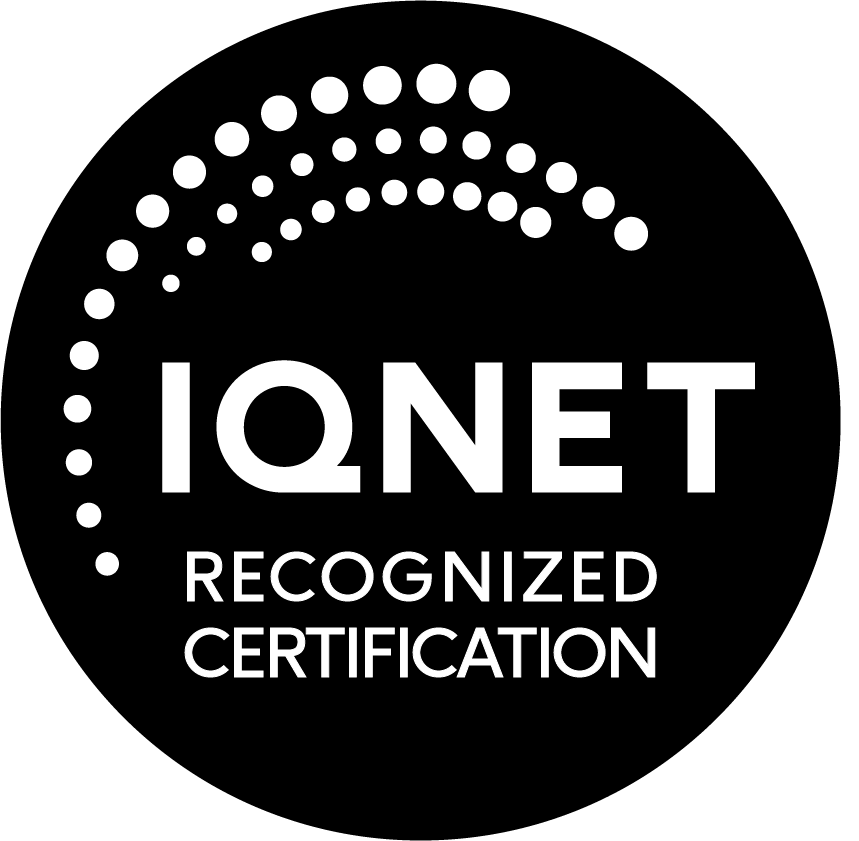Softgel capsules are widely used dosage forms in the pharmaceutical, nutraceutical, and cosmetic industries due to their ability to encapsulate liquids, for better absorption of the active ingredient. However, despite all the quality control measures, softgel capsules may sometimes exhibit defects that can affect the quality in terms of appearance, and safety of the product. This article explores the types of defects that commonly occur in softgels, their origins, and the visual inspection techniques that can be employed to identify and sort these defects effectively.
HOW A SOFTGEL CAPSULE IS MADE
Before we focus on the defects, it is useful to understand how a softgel is made. The manufacturing of a softgel capsule involves several distinct steps: formulation development and fill material preparation, gelatin preparation, encapsulation, drying, optional printing, and quality inspection.
Formulation Development & Fill Material Preparation: The process begins with the formulation development stage, where specialists develop an optimal blend of the active ingredient (or API) and other components such as oils, solvents, or suspensions. The goal is to achieve the desired therapeutic effect and ensure compatibility with the softgel encapsulation process. During regular production the fill material is prepared according to the established recipe and carefully fed into the encapsulation machine, where it will be used to fill the softgel capsules.
Gelatin Preparation: The gelatin shell is a critical component and is made by mixing gelatin powder with water and additives like glycerin or sorbitol for flexibility and strength. The mixture is heated until fully dissolved, degassed to remove air bubbles, and may include colorants or opacifiers to achieve the desired appearance. The solution is then fed into the encapsulation machine where it is cooled and processed into two continuous ribbons of precise thickness and width, ensuring uniformity and quality of the softgel capsules.
Encapsulation: The encapsulation machine is equipped with rotating die rolls that form the top and bottom halves of the softgel capsule. As the prepared gelatin ribbons pass between the die rolls, a precisely measured dose of the fill material is injected between them. The ribbons come together, and the die rolls seal and shape the capsules, ensuring a seamless bond around the fill material.
Drying: Post-encapsulation, the capsules undergo controlled drying to remove excess moisture. Initially tumbled in drying tunnels, the softgels are then spread on drying trays within specialized rooms for further reduction of moisture to maintain their integrity and quality.
Printing (optional): Some softgels undergo a printing step to add identification marks or dosage information. Specialized equipment aligns and stabilizes the capsules while a printing head applies ink that adheres without compromising softgel integrity.
Quality Inspection: Following the drying and optional printing processes, the softgels are rigorously inspected to ensure compliance with regulatory standards. This includes visual inspections for defects and assessments of weight, hardness, disintegration, and dissolution. Inspections can be conducted through manual checks where trained personnel meticulously examine each capsule for quality assurance, or using automated systems equipped with cameras and sensors for precise defect detection. This approach ensures that all softgels meet the required safety and quality benchmarks before they proceed to packaging and distribution.

PRESENCE OF DEFECTS
Despite advances in manufacturing processes, producing defect-free softgels remains challenging. Modern production machines operate 24/7, producing large quantities of capsules, making it inevitable that some defects will occur.
In the table below, we provide an overview of the most common visual softgel defects, categorized by their source—fill material preparation, gelatin preparation, encapsulation, drying, and printing. Each defect is described along with its cause.
| Process | Defects | Related causes |
|---|---|---|
FILL MATERIAL PREPARATION |
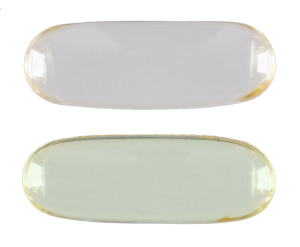
Color variation |
Can occur due to variations in the composition or concentration of colorants used in the fill material preparation. It may result from improper mixing, inadequate dispersion of colorants, or inconsistencies in raw material quality. |
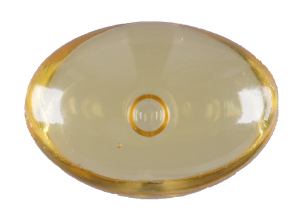
Air bubbles in fill |
Trapped air within the softgel capsule, typically visible as small voids or bubbles. This defect can arise during the mixing or filling process if proper deaeration techniques are not employed. Air bubbles can compromise the integrity of the fill material, leading to uneven distribution of the active pharmaceutical ingredient (API) and excipients. | |
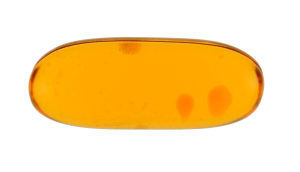
Sedimentation |
Refers to the settling of suspended particles within the softgel capsule, resulting in uneven distribution of solid components. This defect is common in suspension-based fill formulations and can occur if the fill material is not properly homogenized or if the suspension lacks adequate viscosity or stability. | |
GELATINE PREPARATION |
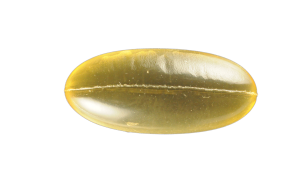
Opacity |
Can result from improper gelatin hydration. Inadequate hydration affects the gelatin’s transparency, leading to a cloudy appearance. This may occur due to insufficient mixing time, improper water-to-gelatin ratio or inadequate control during gelatin preparation. |
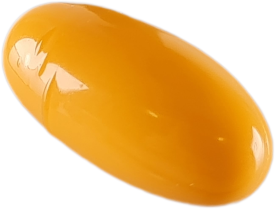
Uneven surface |
Inconsistent bloom levels can cause variations in capsule thickness and texture, resulting in an uneven surface and compromised visual appearance. The reason for that may lay in variations in gelatin hydration, temperature or pH during its preparation. | |
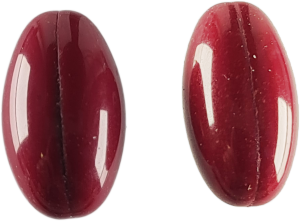
Color variation |
Uneven color variation is a defect that can happen either in gelatin production or encapsulation. In case of gelatin preparation, inconsistent dispersion or blending of colorants will lead to color variations within the same batch of softgels. | |
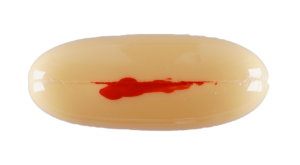
Leakers |
Leakers, a very common issue in every softgel production process, can be a result of different factor. One of the reasons for capsules to leak can also be found in improper gelatin viscosity. | |
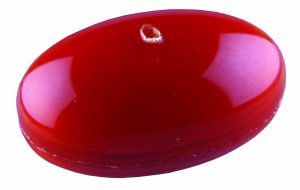
Air bubbles in gelatin |
Improper degassing techniques during gelatin preparation can lead to air entrapment within the capsule shell. | |
ENCAPSULATION/CAPSULE FILLING |
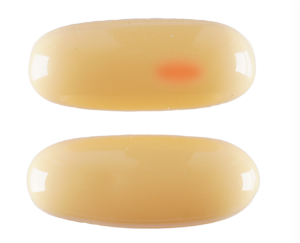
Color variation / Color spot |
Color variation can also result from gelatin migration during encapsulation, causing uneven distribution of the fill material, resulting in visible streaks or patches on the capsule surface. |
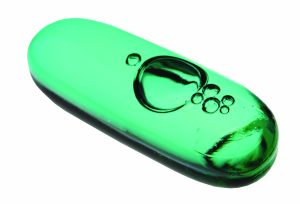
Bubbles |
Bubbles inside of the softgel can result from excessive agitation or improper filling techniques. | |
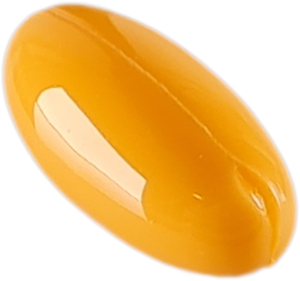
Leakers /Damadged seam |
Leakers are a critical issue that can also be a result of inadequate sealing pressure or equipment malfunctions during encapsulation. | |
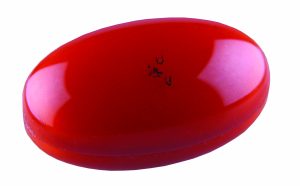
Dots and speckles |
These defects can originate from contaminants of foreign particles introduced during the manufacturing process or inadequate cleaning of equipment. Contaminants can enter the softgel capsules during gelatin preparation, encapsulation, or drying stages if the equipment or manufacturing environment is not properly cleaned and maintained. Improper handling of raw materials can also introduce contaminants into the gelatin-filling material mixture, leading to dots and speckles on the capsule surface. | |
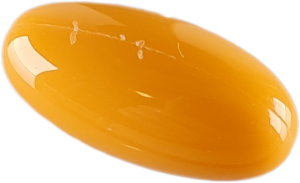
Burr |
Occurs during the encapsulation phase when the die rollers do not cut the gelatin properly. As a result, excess gelatin is not fully trimmed and remains attached to the softgel capsule, leading to unwanted gelatin fragments or ‘burrs’ on the capsule surface around the seam. | |
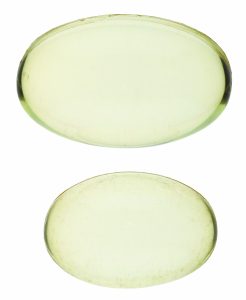
Size Inconsistency |
Occurs due to issues such as equipment malfunction (dye roles are misaligned, worn out), uneven gelatin ribbon thickness, improper filling machine calibration, fill material variability, or temperature and humidity fluctuations. It results in not uniform softgel sizes, potentially affecting dosage accuracy and product quality. | |
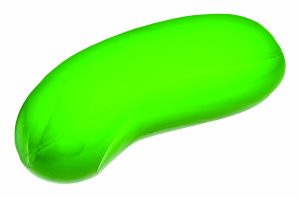
Shape |
Uncontrolled gelatin viscosity, humidity or temperature during encapsulation may result in misshapen softgel capsules, as for example elongation, deformation etc. Misshapen capsules can occur if the gelatin viscosity is not properly controlled, leading to variations in capsule thickness or shape. Temperature and humidity fluctuations during encapsulation can also affect gelatin flow properties, resulting in misshapen capsules. | |
DRYING |
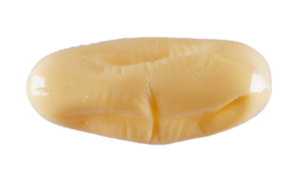
Wrinkling/shrinking |
Inadequate drying or cooling conditions can cause wrinkling and/or shrinkage of the gelatin shell leading to improper shape. This may stem from too high temperature which causes rapid moisture evaporation and uneven drying. Cooling too quickly the capsules after encapsulation can lead to uneven shrinkage as well. |
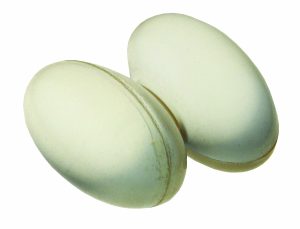
Twins |
Improper drying and cooling conditions may cause softgels sticking together due to residual moisture on the softgel surface. It can also result from inadequate airflow or improper spacing between capsules while drying. | |
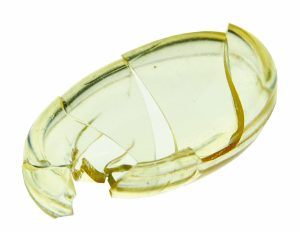
Cracks |
Unoptimized drying parameters can cause gelatin cracks that are visible as lines or fractures on the capsule surface. In addition, excessive pressure or vibration as well as rapid temperature changes can also cause thermal stress that lead to gelatin cracking. | |
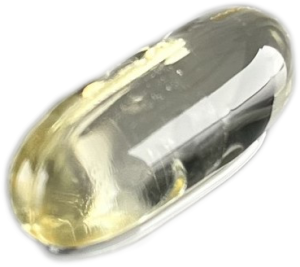
Leakers |
Leakers can also be a result of improper drying or cooling conditions that cause extensive shrinkage of capsules and damage integrity of the seal. | |
PRINTING |
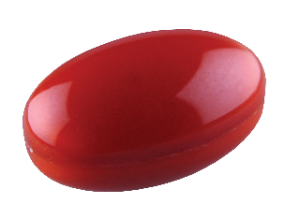
Missing print |
The intended print, whether text, logo, or design, is completely absent from the surface of the softgel capsule. It can result from ink supply issues, equipment malfunction, or poor ink adhesion to the gelatin shell. |
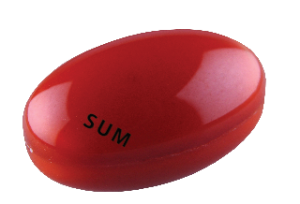
Print position |
Misalignment or off-center printing of the intended design or text on the softgel surface. This can occur due to mis-calibrated printing equipment or mechanical errors during the printing process. | |
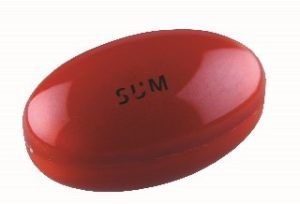
Incomplete print |
Only a portion of the intended design or text is transferred onto the softgel surface, leaving gaps or missing sections. This can result from insufficient ink supply, printing equipment malfunction, or improper ink adhesion. | |
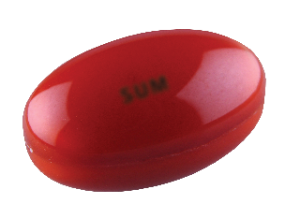
Illegible print |
Printed markings that are unclear, fuzzy, or difficult to read, compromising the legibility and visibility of the intended design or text. This can result from printing equipment malfunction, improper ink application, or poor printing resolution. |
Softgel-producing companies typically employ quality systems that rely on statistical methodologies or 100% visual inspection, which may be either manual or automated. As previously discussed in our article on tablet defects, while statistical methods provide valuable insights, they cannot guarantee the consistent quality of each individual product. Consequently, companies often prioritize 100% visual inspection and sorting approaches to ensure product quality. However, conducting precise manual visual inspections for high-volume softgel batches is exceedingly challenging, particularly given the intricate nature of softgel products. Maintaining stringent quality standards in the pharmaceutical industry becomes virtually unattainable with the inherent risks associated with manual inspections. Therefore, modern companies are increasingly investing in automated capsule visual inspection systems, particularly for complex and visually demanding products that can be effectively assessed using advanced algorithms based on artificial intelligence (AI).
HAVING TROUBLE WITH DEFECTIVE SOFTGELS?
Watch the videos below to see how our visual inspection systems can help. Visit our PRODUCTS page to learn more about our solutions, or contact us at [email protected] to speak with our team of experts.
Conclusion
Softgel capsules are an essential dosage form in various industries due to their ability to encapsulate liquids and improve absorption of active ingredients. However, manufacturing defects can still occur despite advanced processes and quality controls. Understanding the origins of these defects and employing effective visual inspection techniques, particularly automated systems powered by advanced algorithms, can help ensure the production of high-quality softgel capsules.
